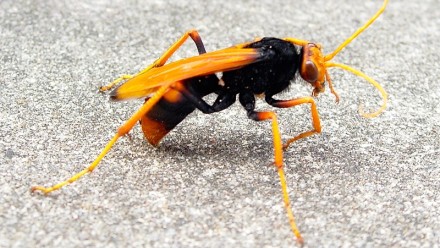Using natural history collections to study spider wasp (Hymenoptera: Pompilidae) systematics, evolution and historical biogeography
Arthropods account for more than 60% of the world’s species, and include a wide array of economically and ecologically important taxa. Despite their diversity and relevance, the phylogenetic relationships and taxonomy of many arthropod groups remains understudied.
My research focuses on the use of morphological and molecular data to study the systematics, diversification, evolution and historical biogeography of terrestrial arthropods. Recently, I have been using transcriptome data, and a bioinformatic approach to study the phylogenomics of two ancient terrestrial arthropod groups: spiders (Araneae) and millipedes (Diplopoda).
Most of my research has been dedicated to Hymenoptera, more specifically spider wasps (Hymenoptera: Pompilidae). Pompilids are solitary, predatory wasps that provision their offspring with spiders as the sole food source. The family contains approximately 4,855 described species grouped into 125 genera, which exhibit a wide array of nesting and foraging behavior, and interesting distribution and coloration patterns.
I will present the results of three main projects where I used natural history museum specimens and fossil data to develop dated molecular phylogenies used to examine 1) diversification rate shifts, 2) historical biogeographical models and 3) mimicry evolution patterns in spider wasp groups.
In the first project, we established a correlation between host shifts and diversification rate shifts in the most diverse subfamily of spider wasps: Pompilinae.
In the second, we showed that members of the tribe Aporini had an origin in the Nearctic region in the early Miocene and dispersed to the Palearctic region through the Bering Land Bridge and to South America through the Antilles.
In the third project I show evidence of how Dasymutilla – genus of velvet ants (Hymenoptera: Mutillidae) – coevolved and produced similar coloration patterns to Psorthaspis – a genus of spider wasps – as a result of codivergence produced by müllerian mimicry.
With the use of more than 1,000 pinned specimens from 15 collections, my research highlights the importance of natural history collections in the study of the systematics, historical biogeography and evolution of terrestrial arthropods.









